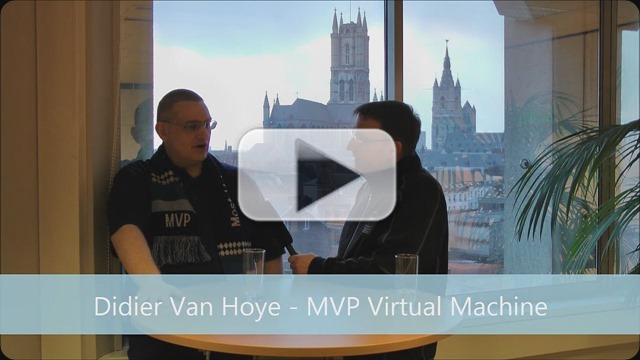Introduction
I’ve parked myself at McCarran International Airport in Las Vegas awaiting the start of my long haul home to Europe. The new terminal is inspiring me to share as I reflect on the past week and on what’s happening at work.
ICT in the 21st Century
A lot is going on and moving in ICT and even more is coming our way. In the Microsoft sphere we got the official heads up at MMS2013 that new features would be publicly discussed at TechEd 2013 (USA or Europe). So you might want to attend that one. I for one think that’s great. We need that information to verify we’re still are on the right track and fine tune our course. Especially in those areas where we can get quick wins with sometimes significant cost savings & benefits. I could start telling you about all the great sessions and products at MMS2013 whilst quacking like a duck “cloud, cloud, …, cloud, cloud, cloud, … cloud”. But I will not. You can watch it all here. I will reflect on the key take away.
Cheaper & Faster
Cheaper AND faster are the new mantra or’ “fast is the new cheap”. Cheaper makes everyone happy especially when quality remains high. Faster is sometimes a bit more of a challenge to sell. “New features, already?” you say. Yes. The nature of our economies and industry is being transformed by the cloud and commoditization. It brings a lot of benefits, especially in a high speed, low drag world.
Fast is actually faster. For many years now any strategy & execution plan that took more than a couple of years was doomed. You get bypassed and your big investments will never live up to their potential. So, apart from the necessary larger and more long term investments, we evolve more and more towards a perpetual improvements & rapid adoption model. Innovation and the subsequent commoditization of it is pushing this. That’s not bad. By making constant smaller (easier to fund) investments that deliver fast results we get to a more adaptable, agile environment for lesser costs. It’s not that all long term, large scale projects are going away but the ratio is shifting. In smart countries this is already being done for building hospitals and other infrastructure that evolves fast. It’s not unique to ICT. Massive projects taking too long and too much funding lead to out of date solutions at the time of delivery at huge costs. Use this approach where needed but forget about it for the other projects. Cloud will be an important tool in all this, not the goal.
A Word of Warning
Fast and cheap shouldn’t translate into mediocre crap at dump pricing that will bite us. It should also keep in mind the ecosystem and don’t act like a shock & awe offensive leaving everything in it’s track in disarray. It needs to fit into a plan with clear goals an knowing where it fits in and helps. It’s about balance. That’s the art. Knowing what, where, when and with/for who to do it. Not easy. Now let’s hope some of my managers read this blog. It might help them. As the question beckons an answer: who is it that will lead us in this new era? Well not one single person, far from it. It’s a team effort and to lead a team takes competence and some character.
It takes competence and personality
Competence and personality, combined with applying both these (skills and drive) diligently in a sustained fashion. That requires a lot of effort, even when no one is watching you, or perhaps better stated, especially then. Do what needs to be done where and when needed. Not because it could get you promoted or more money. That’s the character part. That’s what drives us to learn by participating in our ICT communities, presenting, attending conferences and networking. But also in those hours spend reading, studying and working in the lab alone or with a buddy. That’s what will make us able to handle the though and bad situations you’ll encounter and overcome them. It’s your resourcefulness that will make you seek and find opportunity in adverse conditions. People like the team members amongst whom I have the distinct pleasure of working. You can’t find such synergy if it’s only about personal gain and getting ahead. There is both a broad and deep skill set needed by all involved and doesn’t come easy nor can it be bought. It has to be acquired through work and experience. The transformation of the ICT landscape is uncharted domain for all but a few of us so it’s going to ask a lot of effort, often outside of our comfort zone.
Sure there are cynics who laugh at this and can’t imagine why someone would do all that without personal and immediate reward. Those are the ones we don’t need and who won’t be there at crunch time. Only after the facts they seek the spotlight to poach the glory if things went well or to condemn those that failed whilst trying. Well, the last so called leader who did that doesn’t work with us anymore. Enough said.



